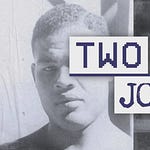A populist uprising against elites. Women’s rights clawed away. The targeting of universities, academics, scientists, professors. Strict enforcement of religious and moral codes. Masked men snatching people off the street.
This is Iran in 1979 and the ensuing years, and it should sound terrifyingly familiar. Clearly, there are vast differences between the cultures of 1970s Iran and modern-day America, but some of the broad-stroke similarities are striking.
There was widespread dissatisfaction with the status quo, which found a diverse coalition to oppose it. For some, the beginning felt like the verge of a new era of liberty, freedom, and equality. But that’s not the way it shook out in the end.
What began as a thirst for change led to nearly 50 years of repression, isolation, state-sponsored violence, and theocracy. Regardless of the obvious differences between us and them, it’s hard to argue that we are not headed down a very similar path.
Zahra Amanpour was born in Tehran in 1979. Her father was a member of one of the opposition groups and was killed by the regime when she was eight. Along with her sister and mother, she fled to the United States, where she spent the next several decades fighting for the rights of women, both here in the States and abroad in her native country, Iran.
The battle for Democracy and freedom in Iran has been led largely by women. This has been especially visible over the past few years since the murder of Mahsa Amini. In Maya’s conversation with Zahra, they talk about the role of women in this fight, and how it’s essential we fight back before it’s too late.











